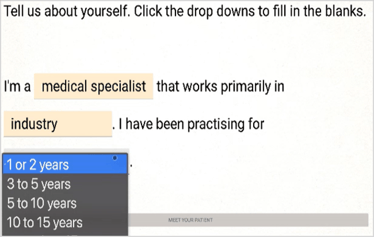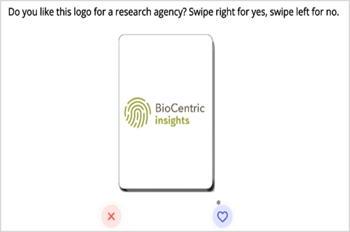The online survey experience could use some help. In a world where attention spans are limited and survey fatigue is increasingly common, market researchers need to find new ways to keep respondents engaged in order to improve response rates and data quality.
That’s where gamification comes in. Defined as the use of game mechanics in non-leisure activities, gamification can make surveys more interactive and engaging, and leverage respondents’ natural desires for achievement and competition.
Research has shown that gamifying surveys leads to1:
- Improved respondent experience: More fun and enjoyable survey experience.
- Increased response rates and engagement: Higher participation and fewer drop-offs.
- Better response quality: More thoughtful and creative answers, less straight-lining and neutral scores.
- Better contextualization of survey questions: For example, simulating a purchase environment can help get a more accurate picture of how a shopper may behave in that situation.
How to Gamify Online Surveys
1) Experiment with Question Wording
Gamification doesn’t necessarily have to involve complicated code – it can be as simple as tweaking the wording of questions. Evoking common game elements such as fantasy (e.g., imaginary scenarios), rules (e.g., restrictions on how to answer the question), and competition (e.g., against a time limit) can turn regular survey questions into fun and challenging tasks.
These techniques were used in a year-long study2 conducted in the UK, which found that the amount and quality of feedback respondents provided increased when survey questions were redesigned to be more ‘game-like’. For example:

2) Present Questions in Interesting Ways
Games often allow players to perform different actions to achieve their goal, such as clicking on objects, hovering over items, and manipulating sliders. This creates variety and ensures that players are engaged throughout the game. Similarly, using different question styles and interactive elements in surveys can help hold respondents’ attention from start to finish.
Some survey software providers have built-in question types to facilitate this, such as sliders or drag-and-drop ranking questions. Companies like Datagame take this one step further, using software modules to turn survey questions into short games. For example, standard demographic questions such as age, gender, and occupation can be converted into a fill-in-the-blanks activity.

Source: Datagame
In another module, respondents evaluate branding elements using a dating app style functionality, i.e. by swiping left or right to indicate appeal.

Source: Datagame
These exercises help researchers avoid designing long, repetitive surveys and introduce some variety in the question styles, making it a more enjoyable and immersive experience for respondents.
3) Incorporate Visual Elements
 The best digital games often involve visuals and graphics that are aesthetically appealing and elicit an emotional response in the player. Introducing imagery into surveys, which tend to be largely text-based, can help tap into respondents’ emotions and uncover a different quality of insights into their attitudes and behavior. For example, replacing numbers on a Likert scale with emojis or illustrations enables respondents to indicate how a particular experience made them feel, in addition to their level of satisfaction.
The best digital games often involve visuals and graphics that are aesthetically appealing and elicit an emotional response in the player. Introducing imagery into surveys, which tend to be largely text-based, can help tap into respondents’ emotions and uncover a different quality of insights into their attitudes and behavior. For example, replacing numbers on a Likert scale with emojis or illustrations enables respondents to indicate how a particular experience made them feel, in addition to their level of satisfaction.
Combining imagery with elements of role play can make this even more impactful. One of Phase 5’s recent surveys for an insurance provider employed the tree-man exercise, where respondents selected a character from the image that best depicted their emotions at the time of cancelling their policy. This task encouraged respondents to project their feelings on the figure and describe them in greater detail, which gave us a richer understanding of their experience.
Limitations of Survey Gamification
It’s important to note that gamification may not be suitable for all surveys. Potential drawbacks include:
- Increases cost: Introducing graphics and interactive elements can increase the time and cost involved in designing and programming the survey.
- Increases survey length: Gamified surveys can be longer, depending on how immersive the activities or questions are, which can lead to more drop-offs.
- Is less favorable for certain audiences: For example, less tech-savvy respondents may find gamified elements harder to use.
- Can be distracting or biasing: In making questions more playful and fun, they can sometimes become less direct and less effective in getting at what we actually want to know.
The Future of Online Surveys
It’s clear that gamification is here to stay. In a 2020 survey, over one-third of research buyers and suppliers indicated that they currently use gamification, while another 22% were considering using it.3
It can be a particularly effective tool for projects where researchers are seeing low response rates, high drop-off rates, or poor data quality, or for surveys targeting certain audiences (e.g., Gen Z respondents) that may react more positively to gamified elements. However, researchers need to consider whether the survey objectives, budget, and sample are aligned with the use of these techniques.
To learn more about survey gamification, or to discuss how Phase 5 can support your organization in its journey to customer-centricity, please contact us.
1 Puleston, J. (2014, May 25). Online research–game on!: A look at how gaming techniques can transform your online research. Shifting the Boundaries of Research. Retrieved October 31, 2022, from https://www.academia.edu/3406890/Online_Research_Game_On_A_look_at_how_gaming_techniques_can_transform_your_online_research
2 Sleep, D. (2012, August 15). Improving online market research through gamification. The Guardian. Retrieved October 31, 2022, from https://www.theguardian.com/media-network/media-network-blog/2012/aug/15/online-market-research-gamification
3 Greenbook. (2020, December 20). Greenbook Research Industry Trends (GRIT) report (2020). Retrieved October 31, 2022, from https://marketing.greenbook.org/hubfs/GRIT/insights-pratice/grit_ipr_2020.pdf




